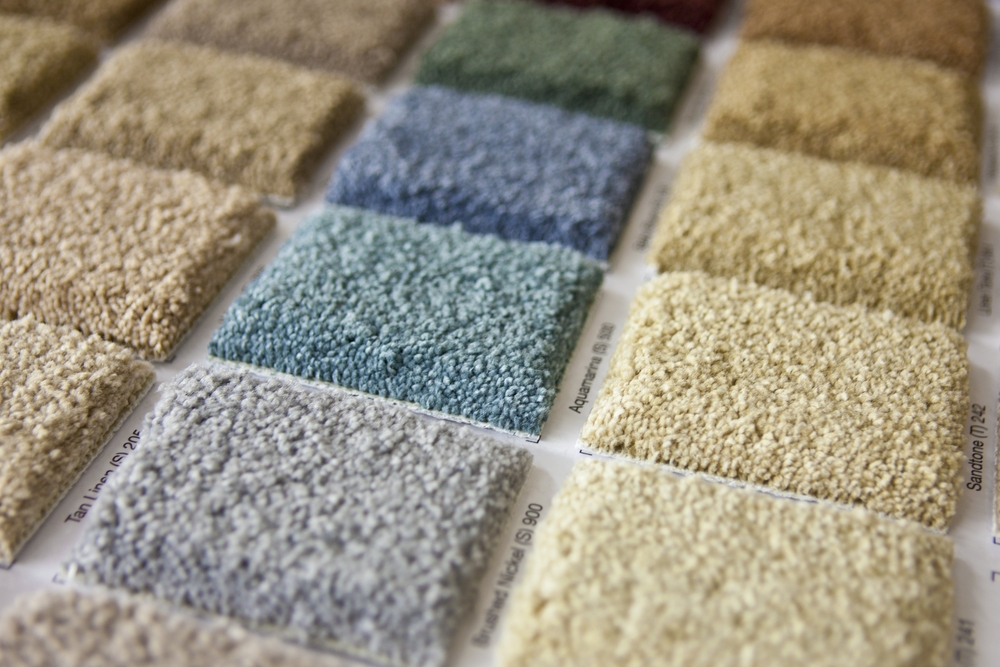Searching for the perfect new carpet for your home can be quite the challenge. You spend hours painstakingly searching for a color and pattern that best suits the room, or rooms, of the house you want carpeted. You feel the carpets to see which will feel best underfoot. While these decisions are important, they are only a part of the carpet buying process. You also need to consider the type of fibers your carpet is made out of: natural or synthetic.
The type of fiber you choose can determine how long and how well the carpet lasts in the rooms you put it in. We’ve outlined the many pros and cons of both natural and synthetic carpet so you can make the most informed decision possible.
Natural Carpet Pros: Durable & Long-Lasting
Natural carpeting is most frequently made out of wool, which is the fleece of sheep. Wool has been used for well over 2,000 years, and is one of the oldest fibers known to man. This type of carpeting has a multitude of benefits. First, it can hide dirt extremely well. This is because wool fibers can’t be seen through, unlike the transparent fibers of synthetic carpets.
Wool carpet is also exceptionally strong. The fibers are elastic, and can withstand being stretched and crushed and it will go right back to its original shape. This makes wool perfect for high traffic areas. On top of being strong, wool is naturally flame retardant, meaning that it will resist fire. These traits give the carpet a long lifespan, and can thrive for up to 50 years!
Natural Carpet Cons: Expensive & Easily Stained
While wool carpet is strong and has a long lifespan, it does have some downsides. First, it is rather expensive. While wool itself is not a pricy material, the processing, cleaning and preparation of wool into a carpet is what drives the price up.
Another downside to wool carpet is that it stains easily. While this can be beneficial as far as dying goes (you have more options), the absorbent nature of wool means that it can easily take up spilled wine, juice or other liquids. This type of carpet will also absorb pet stains. long with being easily stained, wool is sensitive to certain chemicals, particularly those that are alkaline (having a pH of 9.5 or higher). When fibers are exposed to alkaline chemicals, they become discolored and brittle. And bleach can even completely dissolve it.
Synthetic Carpet Pros: Stain-Resistant & Strong
There are a few different types of synthetic fibers: nylon, polyester and Olefin are just a few. In general, synthetic fibers are more stain resistant, due to being treated. This makes them an excellent choice for families with younger kids who might be prone to spill or families with pets. They are less likely to fade or be damaged by chemicals (except for nylon). Synthetic carpet fibers have less absorbency and dry quicker, which also can make them resistant to mildew.
Synthetic carpets, with the exception of polyester, are relatively strong. Nylon resists abrasions and is quite elastic, being able to be stretched to one third of its length and still bounce back. Olefin is also somewhat strong. This material wears well and can even be used outside.
Synthetic Carpet Cons: Less Variety & Easily Damaged
Like wool, synthetic carpets have downsides as well. For one, these types of carpets tend to have less variety, as they are more difficult to dye. Nylon carpet is acid-dyed, and reacts badly with bleach and pet stains, and it is more likely to fade.
While synthetic carpets resist stains better, this only applies to water-based stains. Oil-based stains, unless treated right away, are likely to oxidize and leave permanent discolorations in the fibers.
Some types of synthetic carpet are susceptible to damage. Polyester carpet, in particular, can face crimp loss when subjected to high amounts of foot traffic. And Olefin, while it wears well, can be damaged by friction and excessive heat.
Choosing the right carpet for your home is so much more than color and pattern. You also need to consider the type of fiber used to make the carpet. If you need help choosing the right carpet for your home and your needs, contact Windows Floors & Decor to speak with a representative today.





